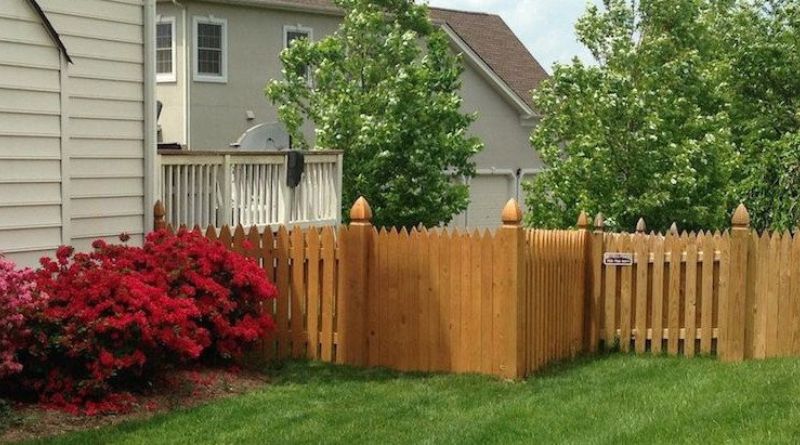Why HOAs Regulate Fences
Neighborhoods’ aesthetic harmony and residential value come from homeowners associations (HOAs) through their regulatory efforts. Fencing regulations are among the toughest HOA regulations since fences are very visible and impact curb appeal directly. By having standards in place, HOAs can ensure a neighborhood’s quality and character remain well-maintained for every homeowner. Potential homeowners who would like HOA fencing in Raleigh, NC tend not only to be interested in knowing how to pick the style but also in knowing which type of materials can be used in compliance with the regulations. The first step toward making a well-informed decision and making the approval process flow smoothly will be knowing the reasoning behind the regulations.
Review and Interpret HOA Guidelines
Examining your unique HOA’s fencing regulations is the most important part of your fence shopping experience. These regulations generally define acceptable and taboo materials, minimum and maximum fence heights, colors, locations, and ornamental features. Reading through them carefully—or contacting the HOA management for clarification—will prevent you from having costly re-dos in the future. A good tip would be to keep the communication channel open with your HOA representative and present sample materials or descriptions to ensure that you’re making compatible material and design choices.
Common HOA-Approved Fence Materials
Most homeowners’ associations follow a shortlist of proven materials that meet the community’s aesthetic and homeowners’ requirements. The most generally accepted materials on this list are:
Wood: Traditional option featuring natural charm and flexibility must be regularly maintained to keep it in style.
Vinyl: More and more sought after because it has a wood look but superior weather and pest resistance.
Aluminum or steel: Sleek, modern, long-lasting, and usually powder-coated for added durability.
Composed of wood cellulose and plastic waste material, composites are valued for their greenness and resistance to decay and warping.
For inspiration on newer techniques, look at collections of fence design inspiration and see what would be most suitable for your area and your taste preferences.
Weighing Durability Versus Appearance
Among the issues when selecting HOA fencing materials is finding materials that both hold up and look good. Wood provides highly desirable warmth but may fade or splint if not properly maintained. Vinyl and metal provide clean profiles and can resist rot, but your HOA may determine your style and color less flexibly. Consider your local climate, sunlight, and humidity exposure level and how much maintenance you can do. While longer-lived materials cost more upfront, they will save you time and money in the long run.
Maintenance Considerations
Many homeowners also overlook maintenance initially. Natural woods tend to need staining or sealing every two years or so to maintain their attractiveness and durability. Vinyl and composite materials require less maintenance and will only need occasional washing, not repainting or fixing. Aluminum and steel fences might also be given anti-rust coatings if used in areas prone to humidity or coastlines. Investing in low maintenance will pay off long-term and save you time and money.
Eco-Friendly and Modern Options
Home sustainability continues to gain popularity in residential improvement efforts, and fence materials and supplies are included. If possible, composite materials containing recycled material or sustainably grown lumber comprise some preferred options. Bamboo and metal with recyclable materials also qualify as environmentally friendly options, gaining popularity in newer developments. Those who own homes and wish to make sustainable updates can review newer sustainable fence ideas on their own or through professional consultation to make their selections a part of contemporary green initiative standards. These benefits the planet and result in less continuous waste and less replacement costs in the long run.
Cost and Long-Term Investment
Budgetary aspects must take into account the initial installation costs and long-term costs. The initial installation costs of wood tend to be lower but regular upkeep costs add up. The increased upfront investment in vinyl and composite materials triggers lesser repair requirements and longer durations of utilization. Compare your plans for the lifespan of the property and the installation and upkeep costs and replacement value. A cost-benefit analysis approach assures your fence investment remains cost-effective and maintains neighborhood values.
Practical Steps to Gain HOA Approval
Once you’ve chosen your material of preference, you will follow several crucial steps to achieve HOA approval. Your proposal must be supplemented by brochures of the specified materials and mock-ups or photographic representations where possible. Your proposal must be well documented on how your chosen material meets every specification as put forth by the HOA. You will anticipate some follow-up inquiries on your proposal and occasional demands for alternative solutions. A seamless and expedient approval will be realized by keeping communication open between you and your HOA and presenting clear justifications: durability, consistency in style, and eco-friendly materials.
Conclusion
HOA regulations challenge the material choice of a fence, where adherence to traditional standards must be maintained, coupled with compliance and personal preference in the design. With good planning, good communication, and research, you can achieve the ideal solution that stands the test of time and meets both your and your neighborhood’s needs. Careful material choices when replacing or building from scratch will provide years of satisfaction and security combined with neighborhood harmony.
MAY YOU ALSO LIKE:Exploring the Charm of Wood Burning Stoves in Northallerton
